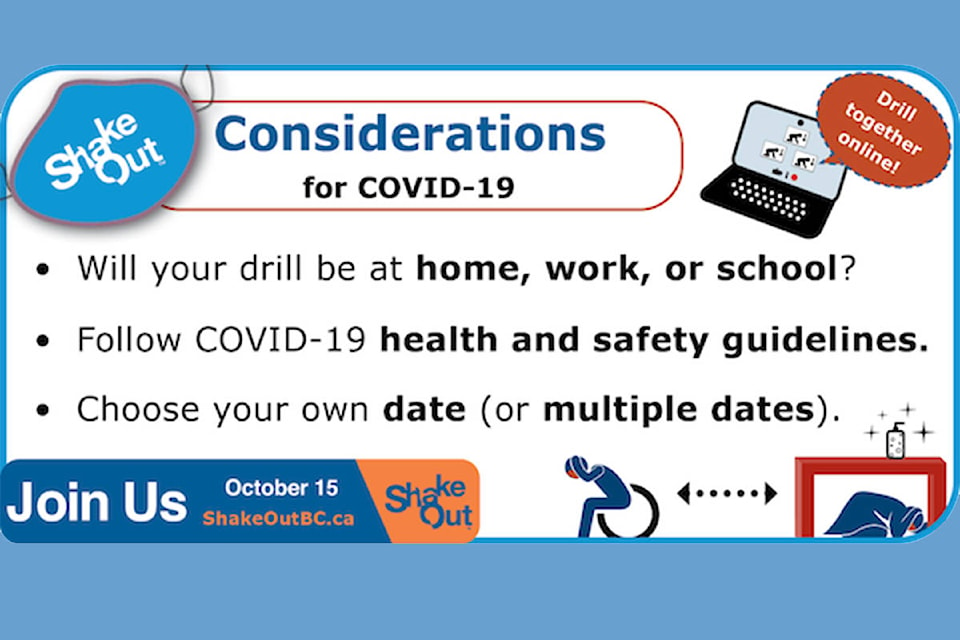The annual earthquake preparedness practice is still taking place because pandemic or no pandemic, the public should be ready for earthquakes in this province.
ShakeOut BC is a chance to practice how to be safe when the earth shakes. By practicing the Drop, Cover, and Hold on response, people create muscle memory which helps people react quickly by getting to a safe space during an earthquake.
More than 3,000 earthquakes occur in British Columbia each year, according to ShakeOut BC. Most are too small to be felt, but the risk of one big enough to cause significant damage is very real. Participating in ShakeOutBC is an effective way to better understand the earthquake risk and how to prepare.
• READ MORE: Drop, cover and hold on: Thousands of British Columbians take part in earthquake Drill
The public can ShakeOut at home, work, school or even through a video conference with colleagues and even do the practice on different days.
International ShakeOut Day is always the third Thursday of October. This year it’s on Oct. 15 but people can do it anytime. Most will do it at 10:15 a.m. on Thursday, Oct. 15.
Across the province an estimates 688,000 plan to take part this year. People can register at the ShakeOut website which has partication information and even swag.
During the practice, people are asked to find a safe location under a table or desk and hold on as if a real earthquake was occurring. There’s tips on the website for what do to when there is a disability or physical limitation that doesn’t allow for dropping to the ground and getting under a table or desk.
TIPS
What to do Before an Earthquake
- Be prepared to be on your own for a minimum of three days or ideally up to one week by developing your emergency plan, putting together your emergency kit and connecting with your neighbours (PDF, 2.55MB).
- Take part in the Great British Columbia ShakeOut earthquake drill every October and practice what to do when the ground starts shaking.
What to do During an Earthquake
- When you feel the ground shake, immediately drop, cover and hold on.
- Drop to your hands and knees. If you’re inside, stay inside – don’t run outdoors or to other rooms.
- Cover your head and neck with your arm and take shelter under a sturdy piece of furniture. If there is no shelter nearby, crawl to the nearest interior corner or wall while continuing to protect your head and neck.
- Hold on to your shelter, covering your head and neck until the shaking stops.
What to do After an Earthquake
- When the earthquake is over and shaking has stopped, count to 60 before getting up.
- Stay calm and move cautiously, checking for unstable objects and other hazards above and around you.
- Be aware of the potential for aftershocks - and continue to drop, cover and hold on every time you feel one.
- This year, going the extra mile might mean participating at a different time or location, with physical distancing and other protective measures in place.
.
Got a news tip?
Email: heather.colpitts@langleyadvancetimes.com
Like us on Facebook and follow us on Twitter.
